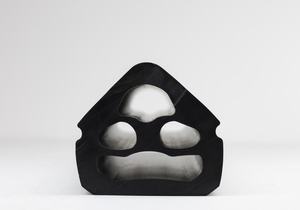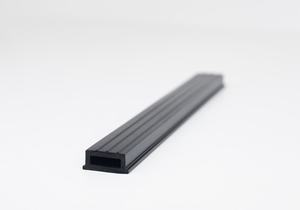
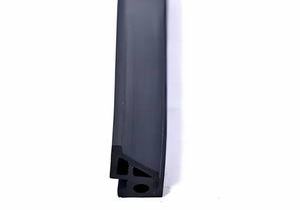
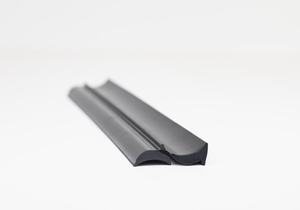
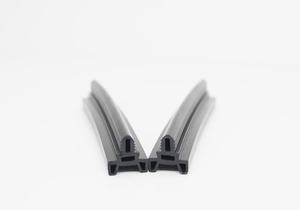
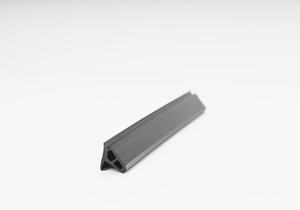
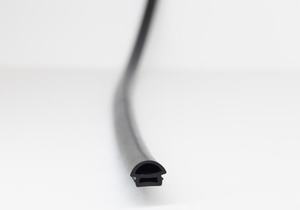
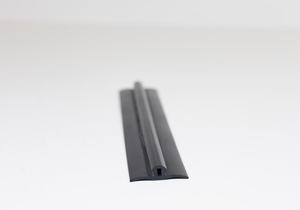
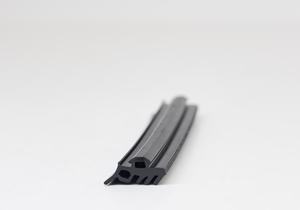
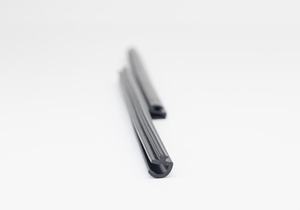
GRP pipe seals, also known as fiberglass pipe seals, are essential components in various industrial, municipal, and civil engineering applications. These seals are specifically designed to provide reliable and long-lasting sealing solutions for joints and connections in GRP piping systems. GRP pipes, characterized by their high strength-to-weight ratio and corrosion resistance, are widely used in sectors such as water and wastewater management, chemical processing, oil and gas, and infrastructure development.
Here’s a comprehensive description of GRP pipe seals, including their types, functions, applications, and installation:
- Types of GRP Pipe Seals:
- Rubber Ring Seals: Similar to PVC pipe seals, rubber ring seals are commonly used in GRP piping systems to create watertight joints between pipes. These seals are pre-installed onto the spigot end of GRP pipes and form a secure seal when two pipes are joined together.
- Compression Seals: Compression seals consist of a compressible material such as rubber or EPDM (ethylene propylene diene monomer) that is inserted between two mating surfaces of GRP pipes and fittings. When compressed, these seals create a tight and durable seal, preventing leaks and ensuring the integrity of the joint.
- Mastic Seals: Mastic seals, also known as sealant tapes or putties, are used to fill gaps and irregularities in GRP pipe joints, providing an additional layer of protection against leaks and environmental factors. Mastic seals are applied manually to the joint surfaces before assembly and cure to form a flexible and waterproof seal.
- Threaded Seals: In applications where GRP pipes are connected using threaded fittings, threaded seals such as Teflon tape or pipe thread sealant are used to prevent leaks at the threaded joints. These seals provide a barrier against water and gas leaks, ensuring tight connections and reliable performance.
- Functions of GRP Pipe Seals:
- Leak Prevention: The primary function of GRP pipe seals is to prevent leaks at joints and connections, ensuring that GRP piping systems remain watertight and free from leaks.
- Corrosion Resistance: GRP pipe seals are resistant to corrosion, chemicals, and aggressive fluids, making them ideal for use in corrosive environments such as chemical processing plants, wastewater treatment facilities, and marine applications.
- Pressure Resistance: GRP pipe seals are designed to withstand high levels of internal pressure, making them suitable for both low-pressure and high-pressure applications such as water distribution networks, sewage systems, and industrial pipelines.
- Temperature Resistance: GRP pipe seals can withstand a wide range of temperatures, from freezing conditions to high heat, without compromising their sealing properties. This makes them suitable for use in diverse climatic conditions and industrial processes.
- Applications of GRP Pipe Seals:
- Water and Wastewater Management: GRP pipe seals are extensively used in water supply networks, sewage systems, and wastewater treatment plants due to their corrosion resistance and durability.
- Chemical Processing: In chemical processing industries, GRP pipe seals are used to convey corrosive chemicals and fluids safely, ensuring leak-free operation and environmental protection.
- Oil and Gas: GRP piping systems with appropriate seals are employed in oil and gas exploration, production, and transportation, where resistance to corrosion and high pressure is critical.
- Infrastructure Development: GRP pipe seals play a vital role in infrastructure projects such as bridges, tunnels, and drainage systems, providing reliable sealing solutions for underground and aboveground piping installations.
- Installation of GRP Pipe Seals:
- Surface Preparation: Before installing GRP pipe seals, ensure that the mating surfaces are clean, dry, and free from any contaminants or debris that could affect the seal’s performance.
- Proper Alignment: Align the pipes or fittings correctly to ensure a tight and secure connection. Misalignment can lead to leaks and compromised seal integrity.
- Compression and Seating: For compression seals and rubber ring seals, apply sufficient pressure to compress the seal evenly between the mating surfaces, ensuring a tight and uniform seal.
- Sealant Application (if necessary): In applications where mastic seals or sealant tapes are used, apply the sealant to the joint surfaces according to the manufacturer’s instructions, ensuring complete coverage and proper curing.
- Testing and Inspection: After installation, conduct a pressure test or visual inspection to verify that the seals are functioning correctly and there are no leaks present.
In summary, GRP pipe gaskets are critical components in GRP piping systems, providing reliable sealing solutions for a wide range of industrial, municipal, and civil engineering applications. With their resistance to corrosion, chemicals, pressure, and temperature extremes, GRP pipe seals contribute to the efficiency, longevity, and safety of piping infrastructure in diverse industries and environments.



